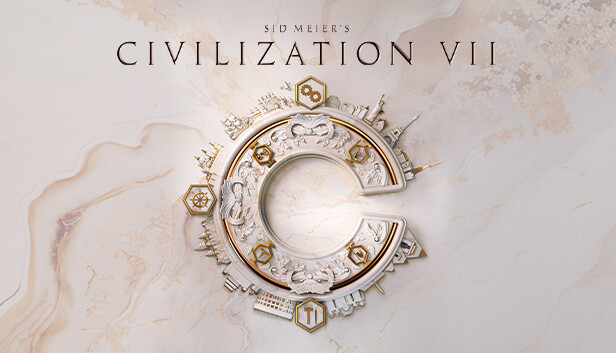Civilization VII introduces several major changes and new features that significantly evolve the series’ classic 4X strategy gameplay. Here’s a comprehensive look at the key differences between Civilization VI and VII.
>> Join the Civ VII discussion on Jyst <<
Fundamental Changes to Game Structure
- New Three-Age System:
- Civilization VII replaces the traditional multiple eras with just three ages: Antiquity, Exploration, and Modern.
- Each age is more distinct and impactful than previous era transitions.
- Players choose a new civilization when entering each new age, with options based on their previous choices and gameplay style.
- The system aims to prevent early-game advantages from snowballing and keep late-game gameplay engaging[1][2].
- Crisis Events and Policies:
- Each age culminates in Crisis events, which require players to adopt Crisis Policies—negative effects that impact gameplay[2][5].
- Legacy Paths:
- Players can pursue achievements in “Legacy Paths” during the first two ages, such as building World Wonders in the Antiquity age for cultural dominance[2].
Leaders and Civilizations
- Leaders Decoupled from Civilizations:
- Any leader can lead any civilization.
- Leaders aren’t necessarily historical heads of state (e.g., Benjamin Franklin is a leader option)[1][2].
- New Leader Attribute System:
- Lets players customize leader strengths with points.
- Age-Specific Civilizations:
- Each age has its own unique set of civilizations to choose from[2].
City Management and Development
- New Towns System:
- Settlers now found towns instead of cities.
- Towns have no production queue and automatically convert Production into Gold.
- Towns can be specialized (farming, mining, military fort, trade outpost, etc.).
- Towns can be upgraded to full cities by spending Gold, with cost increasing based on existing city count[1][4].
- City Changes:
- Cities no longer automatically expand to new tiles.
- Players choose which adjacent tiles to annex when cities grow.
- Worker units have been removed—improvements are added automatically to new tiles.
- City tiles are now classified as “rural” or “urban”.
- Urban districts can contain any combination of buildings rather than being specialized.
- Walls can be built in each urban district, requiring invaders to breach multiple fortifications[2][4].
Military and Combat
- Commander Units:
- New special military units that lead armies.
- Only Commander units can gain experience and receive promotions.
- Provide passive bonuses to nearby units.
- Can stack other units for group movement.
- Can issue tactical orders to nearby units with attack bonuses[6].
- Other Military Changes:
- Individual units no longer gain experience or promotions.
- Units can fortify and build actual fortifications.
- Proper flanking bonuses added—attack direction matters.
- Units can embark over shallow water by default[6].
Diplomacy and Trade
- New Influence System:
- Influence is a new resource spent on diplomatic actions.
- Used for positive actions like gaining city-state loyalty and making agreements.
- Can also be used for negative actions like sanctions or military infiltration.
- Can spend Influence to prevent relationship deterioration[6].
- Other Diplomatic Changes:
- War Support and War Weariness mechanics added.
- Trade system streamlined to focus on broader relationships rather than individual deals.
- Independent Powers replace Barbarians and can potentially become City-States[2].
Additional Features
- Cross-Progression Elements:
- New Legends system tracks achievements across multiple playthroughs.
- Mementos system provides persistent rewards that carry over between games.
- Nearly 100 unique Mementos to earn that provide various bonuses.
- Narrative Events:
- New system presents players with choices that impact their civilization’s development.
- Over 1000 different narrative events at launch.
- Events offer approximately equal value rewards but shape civilization’s character.
- Technical Features:
- Cross-platform multiplayer between PC and consoles.
- Games can span all three ages or focus on just one age.
- Supports up to 8 players (varies by platform and age).
References:
– [Civilization 7’s new features: a revamped three-age structure, towns, navigable rivers, and more](https://www.pcgamer.com/games/strategy/civilization-7-new-features/) – Tyler Wilde, PC Gamer, August 20, 2024
– [PC Gamer Summary of changes in civ7](https://forums.civfanatics.com/threads/pc-gamer-summary-of-changes-in-civ7.691496/) – SupremacyKing2, Civilization Fanatics Center Forums, August 23, 2024
– [7 Biggest Civ 7 Differences From Civ 6](https://www.youtube.com/watch?v=mGK-K-eGLrk) – Eurogamer, February 12, 2025
– [Civilization 7: Everything we know about the first new Civ game in …](https://www.pcgamer.com/games/strategy/civilization-7-release-date-ages-changes/) – PC Gamer
– [MASTER the 5 KEY NEW FEATURES in Civ 7!](https://www.youtube.com/watch?v=3Ql3hMLivBc) – JumboPixel, February 5, 2025
Citations:
[1] https://www.ign.com/wikis/civilization-7/Biggest_Civ_7_Changes_for_Civ_6_Players
[2] https://forums.civfanatics.com/threads/pc-gamer-summary-of-changes-in-civ7.691496/
[3] https://www.youtube.com/watch?v=QFGuiqUnWHM
[4] https://www.pcgamer.com/games/strategy/civilization-7-release-date-ages-changes/
[5] https://www.youtube.com/watch?v=3Ql3hMLivBc
[6] https://www.pcgamer.com/games/strategy/civilization-7-new-features/
[7] https://www.thegamer.com/civilization-7-guide-to-resources/
[8] https://www.pcgamer.com/civilization-7/


